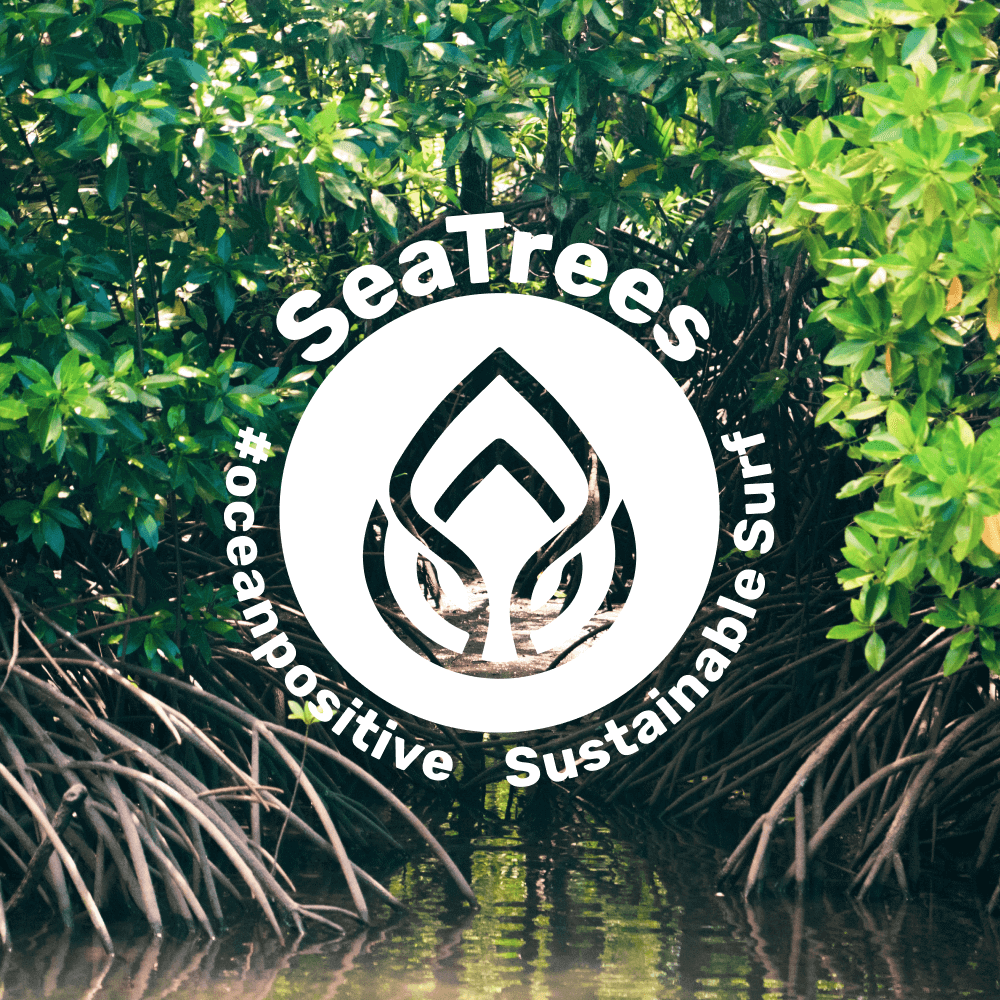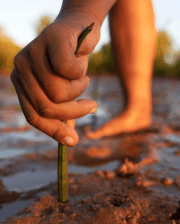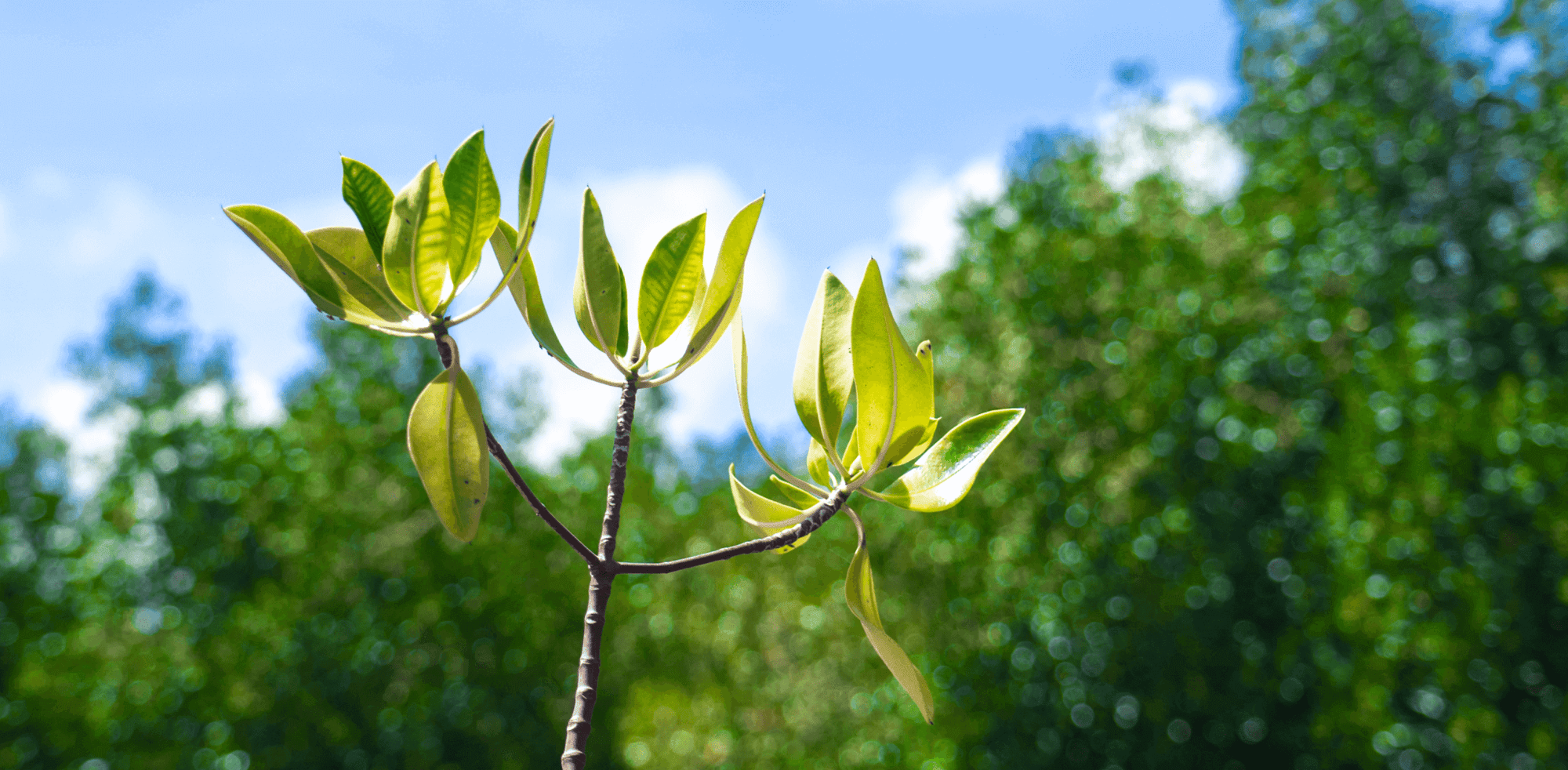With every sweatshirt, print, or t-shirt purchased, you will be planting mangrove trees in Biak, Indonesia.

Why plant trees?
We believe business can be a powerful tool for positive environmental change. We also understand that every time we make something, it has a negative impact on the planet. That’s why we’re working towards each of our products having a positive impact on you and the planet.

OUR PARTNERS
We partner up with our friends over at SeaTrees. SeaTrees works directly with high-quality reforestation and forest protection projects around the world. Each of these projects sequester carbon, while also providing significant social and ecosystem benefits. The project we specifically partner with is planting mangroves in Biak Island, Indonesia. For every sweatshirt, print, or tee purchased, Alimo plants one tree. This provides sustainable employment for two villages on the island. It helps to protect Biak Island from storm-surges and sea-level rise, creates critical habitat for threatened species, and sequesters carbon in one of the most efficient ways possible. In fact, mangrove forests are 5x more effective at storing carbon than tropical forests.

THIS PROJECT RESTORES AND PROTECTS 1,000 HECTARES OF HIGHLY DEGRADED MANGROVE FOREST
Biak Island's mangrove estuaries are 75% deforested. The project employs local villagers to plant a diverse mix of mangrove species, creating both jobs and healthy ecosystems. Biak Island is located in the center of the Coral Triangle. The reefs around Biak have some of the highest levels of biodiversity on the planet.

KEY IMPACT METRICS:
Every 30 mangrove trees planted:
• Creates 1 day of living-wage employment for local community members, helping to support 55 families
• Provides resources for local education
• Protects local villages from storm surges and sea-level rise
• Serves as critical nursery grounds for fish and shellfish, and increases local marine productivity
• Has the potential to sequester more than 9 metric tons of carbon dioxide of the 25 year life of the trees
comprised of these 8 steps:
THE MANGROVE RESTORATION PROCESS
1.) Our local planting partner first works with all levels of the Indonesian government at the National, Regional, and most importantly, at the Village level (where the primary land ownership/rights is recognised in Indonesia) to secure the authorization agreements needed, as well as the long-term permence for the project site(s).
2.) Workers receive intensive training on proper restoration techniques. This is often delivered by workers from other local projects.
3.) “Before” photos are taken for each hectare (at the time of first planting) with the Theodolite app showing GPS coordinates and other site identification data.
4.) Prior to planting, each worker “harvests” their own supply of appropriate mangrove species propagules/seeds from adjacent healthy remnant mangrove forests. The collected propagules are then recorded and bundled (per person), and held in storage at the village plant nursery until planted. Workers are paid once specific bundles are planted on scheduled communal planting days.
5.) The workers first clear the sites of deforestation debris – and plant the appropriate mangrove species within the appropriate sub-ecosystems. Photo documentation after the planting has been completed is used to validate the estimated number of trees planted per daily section.
6.) As needed, the workers also replant the propagules that can potentially die-off as a result of periodic crab predation, a severe weather event, etc.
7.) Our local planting partner monitors and measures survival rates, growth, health and natural regeneration rates on an annual basis. Photo documentation related to their specific planting sites is provided to SeaTrees to confirm this.
8.) Long-term monitoring and guarding of the restored mangrove forest through a separate “guard fund”, that is created at the very beginning of the restoration efforts. 10% of funding provided by SeaTrees, is set aside into a guard fund that is operated by Eden Projects.
ASSURING TREES DELIVER ONGOING IMPACT
In addition to ongoing evaluation provided by Eden Projects, we assess every restoration site in person. Sustainable Surf / SeaTrees team members visit each planting site we support during the initial planting period to document and verify the process, and progress. We visit all planting sites on an annual basis to validate the progress, and to address any potential issues.
On Biak Island, trained monitoring teams use a series of “circle plots” (a standardized 'Silviculture' evaluation technique) located within the planting sites to annually measure tree growth rate, survival rate, diversity, and other indicators of forest health. These teams also identify areas of the forest that need additional restoration effort, from the occasional destructive impacts of animals ( typically, crab predation) and extreme weather.

